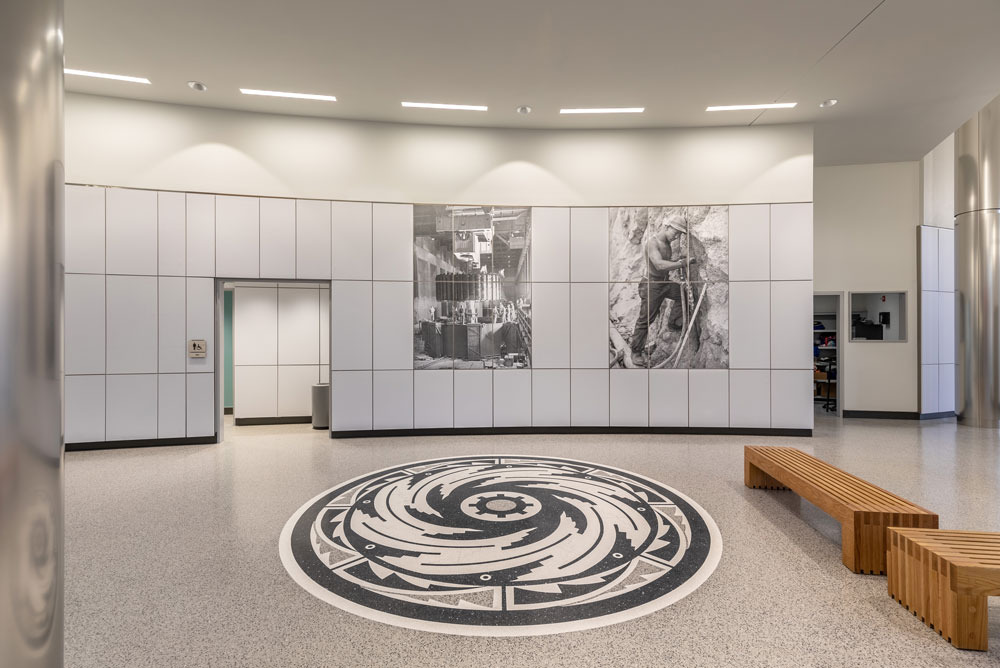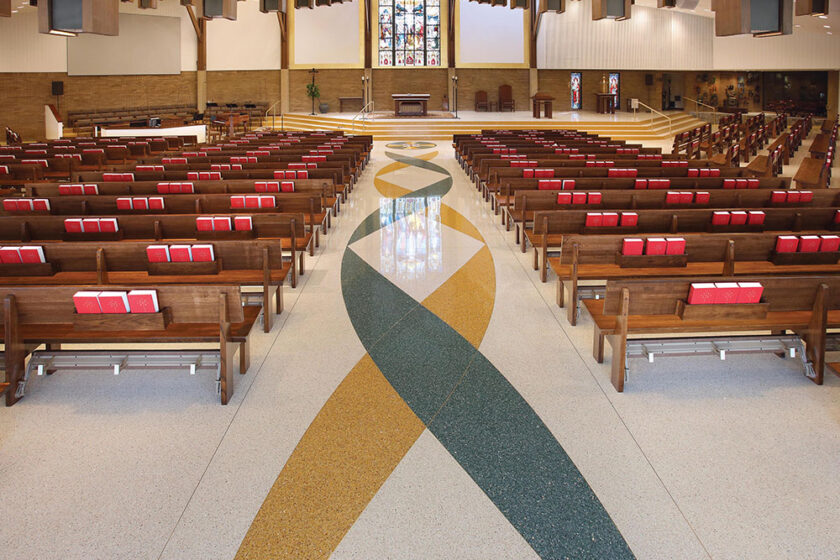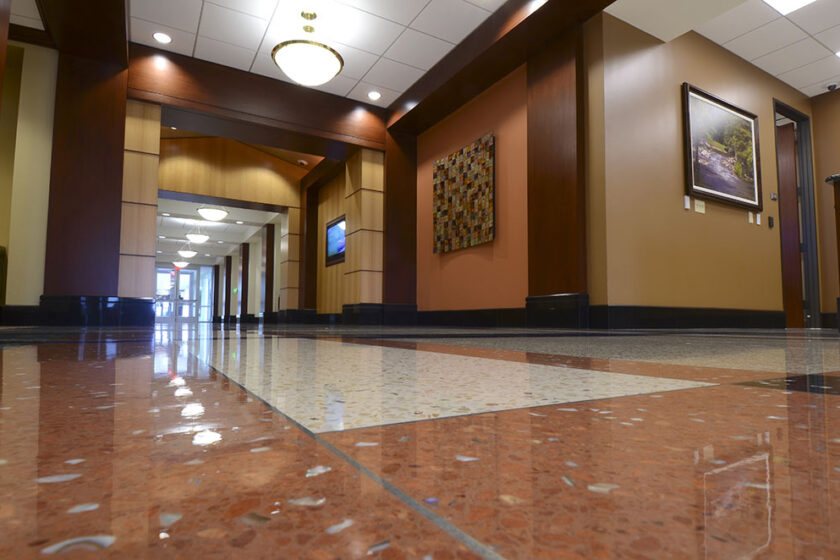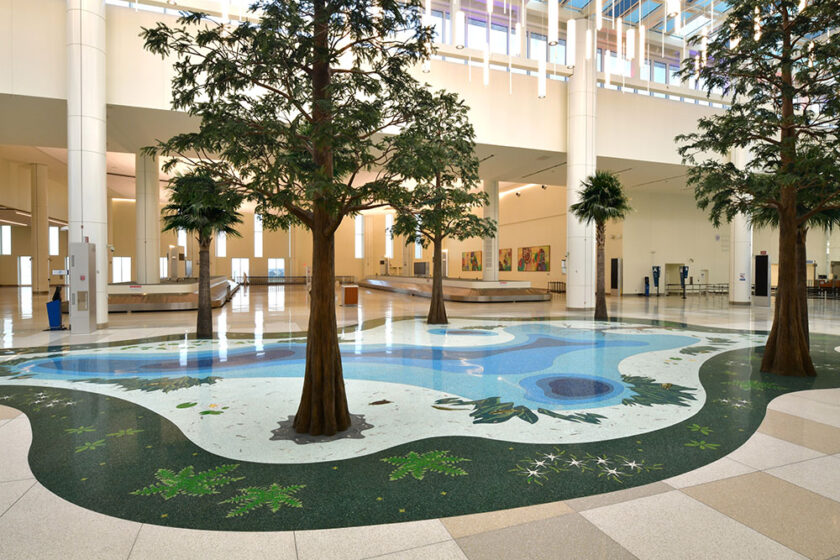Iconic Original Designs, Long Lost to Public View Due to Security Concerns, are Replicated in the Visitor Center of the World’s Most Visited Dam.
The Hoover Dam, completed in 1936, still boasts its original terrazzo flooring. Since tours began in 1937, however, public accessibility to the site has been restricted, first in response to the bombing of Pearl Harbor. The powerhouse and other interior sections have long been cordoned off from the view of some seven million visitors per year to the National Historic Landmark. The public has been blocked from some of the original terrazzo floor inlays for many years.
In 2018, the opportunity was seized to retrieve these lost emblems of the dam’s history when renovations to the visitor’s center were approved. A large Bureau of Reclamation logo in terrazzo was revealed in March 2019 to welcome guests to the remodeled theater level of the 1995 Visitor Center. The logo is one of four replicated terrazzo inlays that guests can now view, recreated from the intricate Art Deco designs of Denver artist Allen Tupper True (1881-1955).
“The terrazzo flooring is a staple of Hoover Dam history and is extremely durable,” said Pat Abbott, Lead Project Manager for the renovations for the US Bureau of Reclamation.
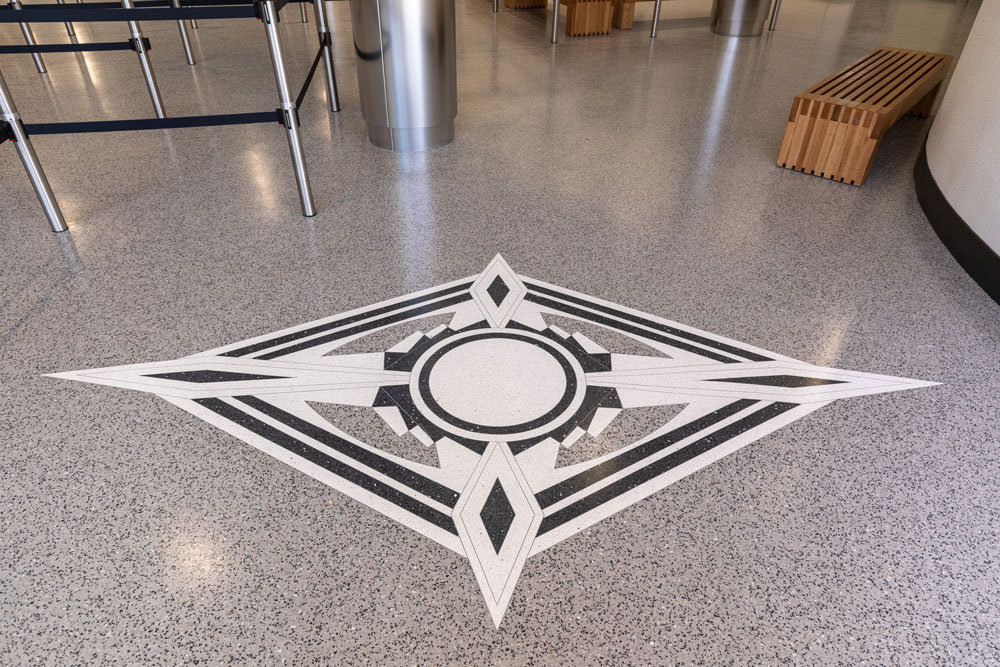


Award Winner
The terrazzo installation earned a 2020 Honor Award from the National Terrazzo & Mosaic Association for Top End Terrazzo of Sun Valley, CA, who worked with TSK Architects of Henderson, NV. Selected among 46 entries, it is designated among the top 18 terrazzo projects of the year.
The terrazzo inlays were produced from precision waterjet-cut zinc plates; the epoxy terrazzo in five colors, with a blend of glass, mother-of-pearl, marble, and mirror aggregates, was hand troweled into place. The terrazzo installation includes a neutral one-color field and a poured-in-place spiral staircase with a waterfall edge.
Functional Beauty
Mr. True, who specialized in portraying Native American and Southwestern themes, set out to instill artistry and functionality in the modern marvel of engineering from its beginning.
“No longer can turbines, tunnels, galleries, cranes, generators, and control boards be assembled with the sole consideration of service and efficiency when, without in any way interfering with function or adding much to cost, these items can be built into a magnificent and inspiring thing of beauty—beauty in a new and modern form,” wrote Mr. True.
For the designs, Mr. True drew upon the machinery of hydroelectric energy and Native American motifs found in the handwork of the Acoma, Pima, and Mimbres tribes. The designs installed in the interior walkways were reimagined in an Art Deco aesthetic, at once modern and traditional. The design concept continues throughout the original construction.
Speaking of his Native American inspirations, Mr. True explained: “For character, style, and distinction, there is nothing to compare with them, and their inherent boldness makes them peculiarly adaptable for use in connection with modern architecture.”
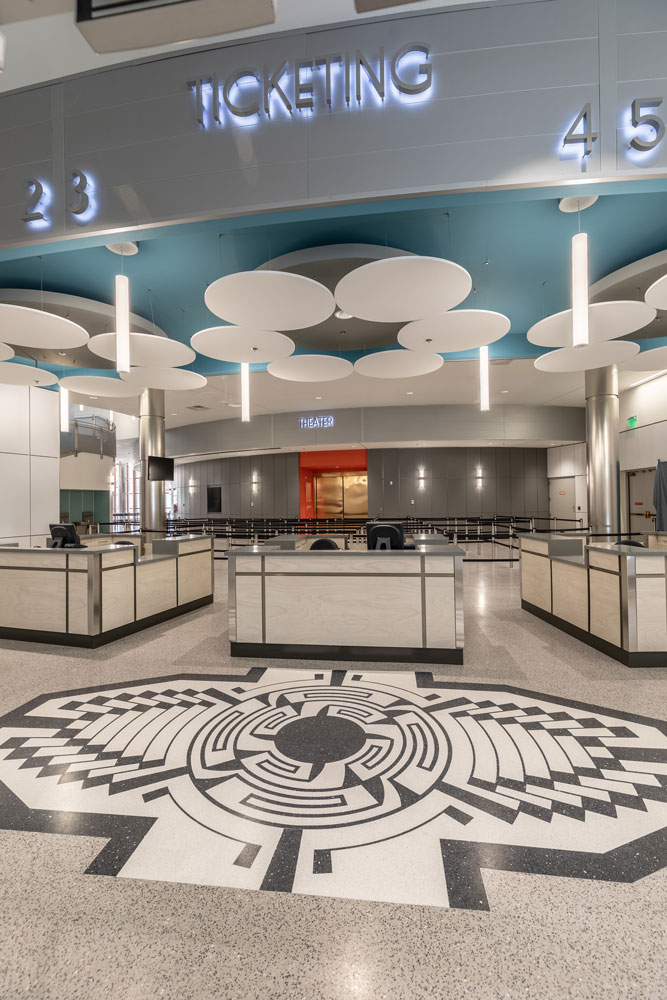
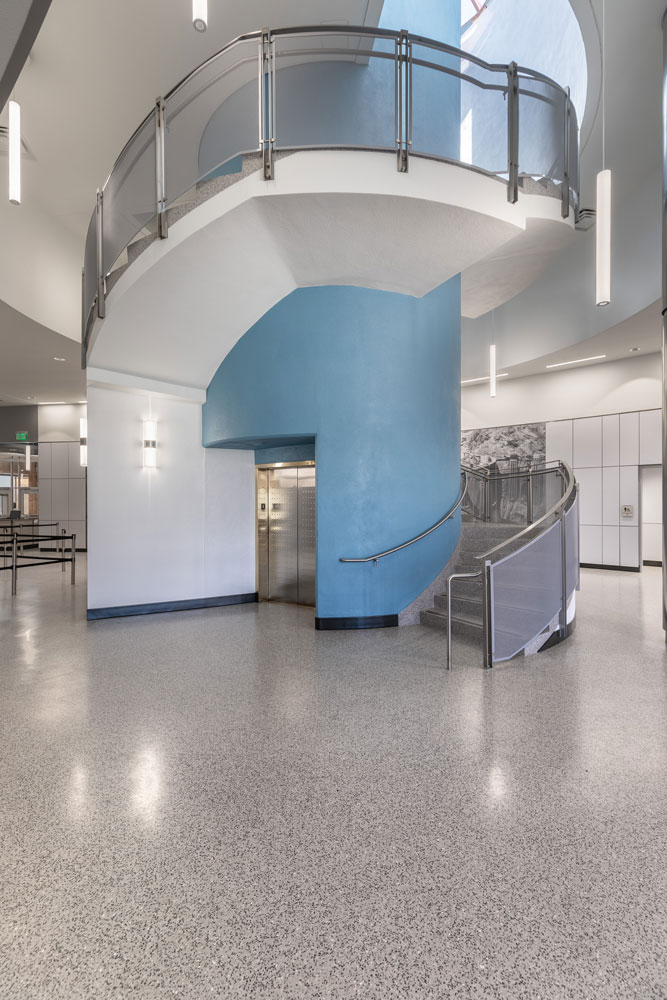
History in the Making
The original terrazzo floors, beautiful and functional, were installed by brothers Joseph and John Martina’s company, J.B. Martina Mosaic of Denver, with 30 of their crew. The craftsmen were among the untold numbers of skilled terazzeri who immigrated from Italy to establish the trade in the US in the early 20th century.
The installation of the traditional sand-cushion, cement-based terrazzo floors began in 1936 and took almost a year. In 2018, approximately 10,000 square feet of a thinner, epoxy-based terrazzo was installed in two months. Both terrazzo floors are seamless, easy to maintain, hardwearing under heavy traffic, and expected to continue to serve the Hoover Dam for many years to come.
“We are extremely happy with the terrazzo floor upgrade in the Visitor Center,” said Mr. Abbott with the Bureau of Reclamation. “Our visitors are amazed by the bright, modern, and durable look the new renovations offer.”
###
Photography: Anthony Moniello

